
In the last decade, Cuba hastened the pace in terms of computerization with various projects that directly influenced the life of the Cuban. The Cuban encyclopedia Ecured, the signing of agreements to win technological independence, the digital leap to the small screen, among others, marked the 10 milestones of computerization that were recorded on our pages in Cubadebate.
Ecured, from experiment to achievement
In the summer of 2009, the National Office for Computerization (ONI) began working experimentally on an encyclopedia with the objective of circumventing the US blockade of Cuba and bringing knowledge to Cubans. Through an intranet, schools, workplaces, doctors and institutions in the country coincided with the content that a small group of people uploaded.
Professional editors of the Institute of Scientific and Technological Information (IDICT) and its network of territorial centers (CIGET), and other CITMA centers, joined this experience in August, while the Young Computer and Electronics Club did it a month later .
In 2010 the Young Club assumed the web hosting, administration and maintenance of the services, with the support of the IDICT, who continued to be responsible for the management and updating of the contents. And in December of that same year, Ecured officially came out.
At first, those interested only had access to collaborations by invitation, thus prioritizing people with skills and knowledge from different sectors of Cuban society. Currently, anyone with a national email and an internet account can collaborate, which has positively influenced an encyclopedia that today gathers information in important fields of knowledge such as history, science, culture, sports and technology
With just over 9 years since its departure, Ecured has the best numbers of a Cuban website, with half a million pages viewed daily. Until December 2019, 57 thousand people have collaborated on 207 thousand articles.
Alba 1: The 1600 kilometers of the gigabyte
In 2007 Hugo Chávez reported on the Alba-1 project, a connection via submarine cable that would link Venezuela with several Caribbean countries. In 2009, Cuba and Venezuela laid the legal basis for the execution of the project that would cross more than 1,600 kilometers. Until then, the island had a bandwidth of 323 megabits per second (Mbps), via satellite, due to the laws of the United States that prevent connection to any of the networks a few kilometers from the archipelago.
It was not until 2011, that the submarine cable touched down in Santiago de Cuba, from Camurí, near the port of La Guaira in the state of Vargas. The cable increased the speed of transmission of data, images and voice, thanks to its 640 Gb (gigabytes).
After an expensive investment valued at 63.4 million dollars, in 2012 the Cuban telecommunications company Etecsa announced the start of voice traffic operations for international telephony. In 2013, the internet traffic quality tests on this new technology began. In May of that same year, 118 commercial offices were opened that would take internet to natural persons.
Wifi, weather vs. download
In June 2013, Cuba took the first step towards the socialization of the Internet, with the opening of 118 navigation rooms for public use. A year later, Cubans know the comfort-connection relationship with the launching of Nauta mail as a mobile service. However, it was not until 2015, with the departure of the first 35 public areas, that a real increase in internet access from the island was felt.
At the end of that year, Etecsa managed to reach 65 public areas between Havana and the provincial capitals. However, although the reduction from 4.50 to 2.00 CUC per hour, with which the service was inaugurated, was considerable, it still represented a strong blow to the Cuban wallets.
In December 2019, the Cuban Telecommunications Company exceeded 1,500 public areas of Wi-Fi connection. It also opened the year with a reduction of 1.00 CUC at 0.70 cents per hour, in the Nautical service of permanent navigation accounts.
Even though almost the entire country has a 3G / 4G mobile data service presence, the WiFi network represents the connection that Cubans most access when it comes to downloading great content, enjoying a music video, series or movie.
Digital Television
The creation of the Cuban Institute of Cinematographic Art and Industry (ICAIC), the ICAIC Latin American News and the Cuban Institute of Radio and Television (ICRT), at the beginning of the Revolution, were only the first samples of a project that the direction of the country promoted to date, as a fundamental basis to promote culture and knowledge.
Electronic Government
In April of last year, the country's management concluded the first stage of the Electronic Government, with the creation of a citizen's portal in each province of the country and the presence on the Internet of all Cuban ministries and entities.
But the closing of the first phase is only the first step towards computerized government. The second stage, Interaction, aims to facilitate the management of production and services between Cuban companies and the population, through the use of technologies, applications and websites that work in an active and safe way.
Access to the Internet through the connection via WiFi, navigation rooms, mobile data, brings Cuban companies and entities to the public, so it is essential to have a fluid communication device between both parties, which goes beyond email. Some initiatives, such as the application of the “QueDebate” Minal, “Citizen Participation” of Xetid, Forodebates in citizen portals and the media, are an important step towards an exercise that can improve the quality of life of Cubans.
Under this maximum, the Telecommunications Research and Development Institute (Lacetel) began to develop in 2012 the technology for digital Television, which was completed the following year under the Chinese standard of Digital Terrestrial Digital Transmission or DTMB.
The first tests carried out in 2013 reached 45,000 Cuban households, thus implementing the standard definition (SDTV, Standard Definition), and in 2014, access to high definition technology (HDTV, High Definition) was added.
During the inauguration of the 4th. Annual Conference of Information Technology, Multimedia and Telecommunications and the 7th. TVD Forum, the general director of the Institute of Telecommunications Research and Development (Lacetel), Glauco Guillen Nieto, commented that a “coverage of more than 70% has been achieved, with respect to the population that today has access to the signal and the digital television (TVD) services ”.
More than 2.2 million receiving devices have been marketed in the network of Cuban stores. This process is intended to end in 2023 with the so-called analog blackout. However, Glauco Guillen recalls that this process has limitations on which work must be done before carrying out the last phase.
"We are talking about a program, whose purpose is not only to anticipate the inevitable technological obsolescence but, above all, that the service reaches the largest number of people and that they are benefited."
Electronic Commerce
Mobile telephony has brought people closer to the digital universe. The advantages offered by access to the network of networks, gather the necessary ingredients not only to capture a moment in our Facebook profile, listen to our favorite playlist or watch an expected series. It also brings us closer to products and services of our interest from the comfort of our home.
This commercial activity is developed thanks to information and communication technologies, which includes promotion, negotiation of prices and contract conditions, billing and payment, delivery of goods or services, as well as after-sales services, among others. It also has extensive advantages, by cutting resource expenditures to the country, the use of cash decreases, which leads to better control. It guarantees to reduce the chains of defaults and allows greater traceability, immediacy and comfort.
As electronic commerce channels in our country, there are the Automatic Teller Machines, Point of Sale Terminals, the Telephone and Internet Banking, the Payment Gateway for Electronic Commerce and the Mobile Banking, the latter with greater success in recent years.
Transfermóvil has become the most popular application, thanks to the facilities of online payment of public services and the management of telecommunications services, through the telebank card.
For its part, EnZona, could become the application that groups all the electronic commerce in one place. With a mobile version of a web page, the customer profile is used to make transactions between natural and all companies or entities that offer gastronomic services, wineries, currency stores, pharmacies, materials trail.
It could also be useful for merchants, provide information about the company's employees and receive payments or opinions for the services provided. It consists of a QR code option where the customer or company makes the payment or charges in a more immediate and automated way.
At the end of 2019, more than 3 million people accessed the internet via mobile data. In December 2018, 46% of customers had phones with the specifications required for mobile data browsing. In December of last year it increased to 56%.
From March to December, more than 470 radio bases were installed for 4G with the exception of Cienfuegos, where work began in early 2020.
Two packages for high consumers, 6.5 GB (35.00 CUC) and 10 GB (45.00 CUC) were added. As well as one of 400 MB (5.00 CUC), with bonus for 4G / LTE users.
To know all the details of the News go to Cubadebate in the link: https://bit.ly/2RGeHJt





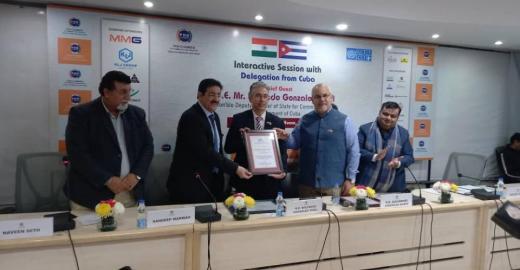

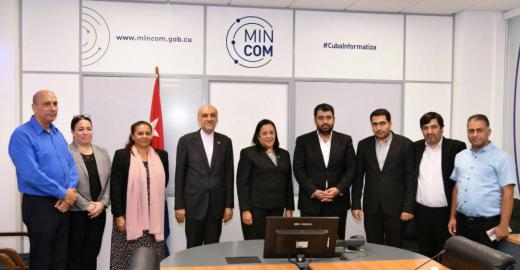

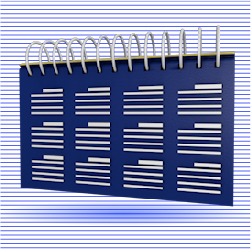
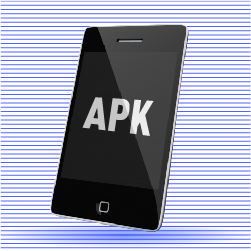
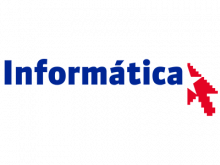
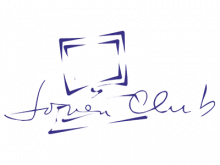
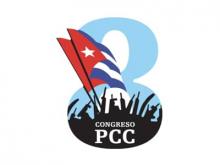
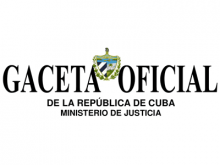
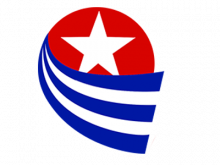
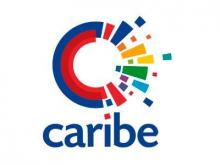
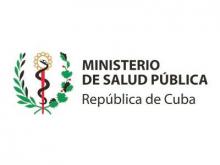
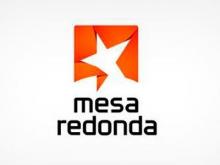
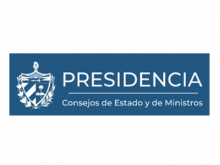

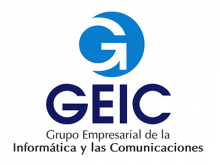
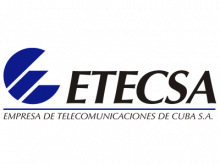
Publicar nuevo comentario